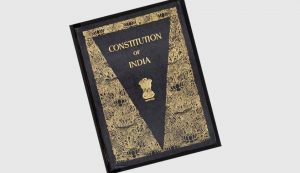
 By Prof Satya Narayan Misra and Kartik Kishore,* August 18, 2022: Adam Smith in The Wealth of Nations (1776) introduced the concept of the ‘invisible hand’ where he believed that ‘the market as if by an invisible hand, will promote the welfare of all.’
By Prof Satya Narayan Misra and Kartik Kishore,* August 18, 2022: Adam Smith in The Wealth of Nations (1776) introduced the concept of the ‘invisible hand’ where he believed that ‘the market as if by an invisible hand, will promote the welfare of all.’
When socialism struck firm roots in USSR as an alternative ideology, Hayek wrote in Road to Serfdom ‘that when individual planning gets substituted by central planning, economic efficiency and freedom will become the first casualty. The disintegration of the USSR by 1991 proved his prognostication to be prescient.
However, the omnipotence of market mechanism received a rude shock when the USA had an economic meltdown in 2007-08, with a contagion effect.
Prof Joseph Stiglitz, the Nobel laureate brought out in his book Price of Inequality’ how market forces help only a few unscrupulous elements, because of a deadly cocktail of ‘poor regulation by the government, information asymmetry, and conflict of interest.’ Brexit (2016) clearly showed how when public policy tries to promote the interest of the elite by overlooking the poor can backfire.
As India’s road to freedom strikes 76, it would be interesting to analyze how India’s Public Policy has panned out in its quest for socio-economic and distributive justice, mandated by the Indian Constitution. For Nehru, Centralized Planning along the lines of the GOSPLAN of the USSR can be transformational. PC Mahalanobis was its intellectual and statistical architect.
 Now that the Planning Commission has been dismantled, it would be useful to recount how a robust evaluation mechanism of our mega programs has been cast aside in the attempt to obliterate the Nehru legacy. A robust Policy Evaluation mechanism is a prerequisite for a sound Public Policy.
Now that the Planning Commission has been dismantled, it would be useful to recount how a robust evaluation mechanism of our mega programs has been cast aside in the attempt to obliterate the Nehru legacy. A robust Policy Evaluation mechanism is a prerequisite for a sound Public Policy.
India was one of the first nations to have a specialized independent organ in form of a Policy Evaluation Organization (PEO) which was established way back in October 1952, with a specific task of evaluating community development programs and other Intensive Area Development Schemes. The independent works of PEO became very effective in evaluating the government programs and policies and recommending corrective measures through feedback.
Pitambar Pant, the civil servant set up the Perspective Planning Division, using sophisticated econometric modeling. Perspective planning, evaluation, and Central Statistical Organization were the high water marks of robust public policy under the benign gaze of Mahalanobis, Pant and Nehru.
However, while the PEO set-up became more robust during the first and third five-year plans, it started to decline after 1969 with Indira Gandhi consolidating power. From the mid-1980s to the liberalization of the economy, the Evaluation of Policy re-gained its lost steam.
However, there was a very crucial difference between the characteristics of the evaluation before and now. While earlier PEO focused more on the “Merits” of the Program or Policy, the emphasis now has shifted to the “Worth” of the Program. Merit refers to the intrinsic value of a program; how effective it is in meeting the needs of the direct beneficiaries.
On the other hand, worth refers to extrinsic value to those outside the program, for example to the larger community or society. Take the case of Mahatma Gandhi National Rural Employment Guarantee Act (MGNREGA) . This welfare program that gets the job to beneficiaries has merit for those who move out of poverty. Thus, while MGNREGA is a ‘meritorious’ program mainly for rural unskilled job seekers, Demonetization has a more ‘worth’ angle to it as it helped create the perception of an attack on corruption.
. This welfare program that gets the job to beneficiaries has merit for those who move out of poverty. Thus, while MGNREGA is a ‘meritorious’ program mainly for rural unskilled job seekers, Demonetization has a more ‘worth’ angle to it as it helped create the perception of an attack on corruption.
Policy Design and its Evaluation is a cyclic process and both go hand-in-hand. As per the principles laid by the Development Assistance Committee (DAC) in Paris (1991), there are five evaluation criteria, viz relevance, effectiveness, efficiency, impact, and sustainability.
Similarly, Policy Design is also a very comprehensive and exhaustive process that involves eight broad steps with constant stakeholder consultation. Policy design identifies a potential ‘need’. If there is no need or requirement amongst the beneficiaries, the policy won’t be accepted and adopted and is bound to fail. For instance, Farm Bills faced staunch opposition in regions of Punjab and Haryana.
This is because the mandi-system is well developed here and people do not ‘need’ any tampering. On the other hand, mandi is scarce in Bihar and the need of the farmer for the creation of a market might be more acceptable to the farmers in these regions.
The identification of the potential need is followed by the conduction of a needs assessment and then researched to find out potential programs for filling up the need is carried out. An evidence-based design is selected and the program is developed to address the need of the stakeholders, which is followed up with the Pilot running and roll-out of the Policy.
The progress of the programs needs to be constantly monitored at each step and evaluated to generate feedback for required modifications. It is under such a broad framework that a policy is designed to address the coordination failure and fulfill the needs of the collective with constant monitoring and evaluation at regular intervals.
 However, the policy design which requires such comprehensive analysis and thinking before being put to action is being steamrolled in the Indian Parliament.
However, the policy design which requires such comprehensive analysis and thinking before being put to action is being steamrolled in the Indian Parliament.
Last year, during the monsoon session 20 bills passed in both Houses of Parliament, either without discussion or minimal, limited to treasury bench MPs speaking on the legislation. Parliament ramrodded 10 bills of national importance within 97 minutes, clocking 9.7 minutes for each bill on average. Now, one may argue that the efficiency or productivity of the Parliament has increased leading to an increase in ‘worth’.
However, with blatant ignorance of the standard procedures the ‘merit’ of these bills passed or how far would they be of any use to beneficiaries is a big question. (Source – The New Indian Express, 05/08/2021)
As India steps into 76th year of independence, one recalls Nehru’s Tryst with Destiny Speech where he recounted Gandhiji’s mission “to wipe every tear from every eye”. By winding up the Planning Commission we have cast aside the importance of perspective planning, evaluation, and accountability.
 The Constitution mandates that it is the ‘duty of the state to raise the level of nutrition, improve the standard of living and ‘strive to minimize inequalities of income’.
The Constitution mandates that it is the ‘duty of the state to raise the level of nutrition, improve the standard of living and ‘strive to minimize inequalities of income’.
The NFHS V report shows how 35% of our children are stunted due to prolonged deprivation of reasonable nutrition and poor sanitation and % of children suffering from anemia increased from 53% in 2015-16 to 57% in 2021. This is despite an Anemia Mukt Bharat campaign.
The World Inequality Report (2022) brings out how the income of the top 10% as a share of national GDP has increased from 41% in 1991 to 57% while for the bottom 50% it has fallen from 23% to 17% in 2021.
By abdicating scientific program setting and evaluation, relegating merit to rhetoric, and giving priority to speed over comprehensive analysis by the Parliament, India’s apex public policy structure displays a cavalier approach.
Quite clearly public policy has to pay greater attention to actualizing the constitutional mandate of socio-economic justice, ensuring access to quality education, and health care& digital capability for all, minimizing income inequality, and ushering ‘in shared prosperity.
*S N Misra is Professor Emeritus, KIIT University, Bhubaneswar and Kartik Kishore is Masters’ in Public Policy and Governance, O.P. Jindal Global University, Sonipat



Leave a Reply
Be the First to Comment!